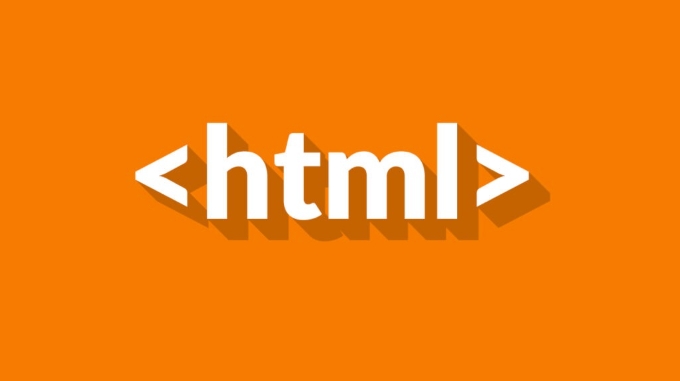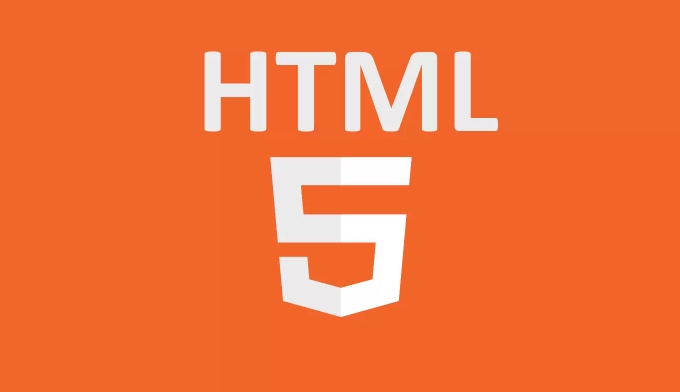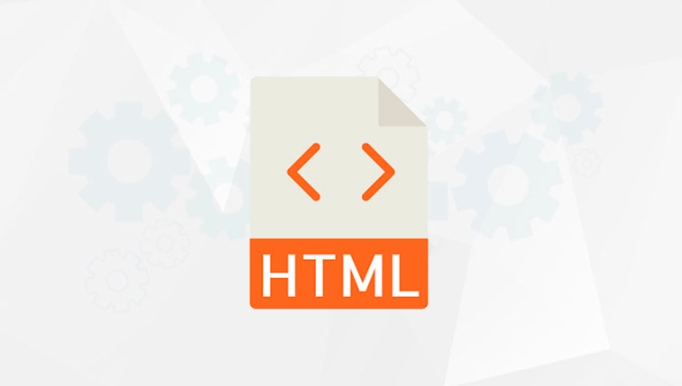<figure> is a semantic tag used to wrap independent media content, such as pictures, charts, videos, etc., indicating that the content can be self-contained; <figcaption> provides it with explanatory text to enhance accessibility and contextual understanding. 1. <figure> serves as a container to improve structural clarity and semantic expression; 2. <figcaption> is placed inside <figure> as title, description or source information; 3. When using it, you should pay attention to non-decorative and non-embedded content to apply, and the alt attribute must still be retained to ensure accessibility.

The <figure></figure> and <figcaption></figcaption> elements in HTML are mainly used to better organize and describe media content in documents, such as pictures, charts, videos, etc. They not only make the page structure clearer, but also enhance semantic expression, which is good for accessibility and SEO.

<figure></figure> : "Container" that wraps media content
<figure></figure> is a semantic tag used to wrap independent content blocks, usually media content such as pictures, illustrations, charts, or code examples. It means that this part of the content is self-contained and can exist independently of other content on the page.
For example, if you put a picture in the article, and the picture will not affect its meaning even if it is taken out separately, it is very suitable to be placed in <figure></figure> .

<figure> <img src="/static/imghw/default1.png" data-src="chart.png" class="lazy" alt="sales data trend chart"> </figure>
One of the benefits of using <figure> is that it lets the browser and helpers know that this content is a separate unit that helps improve the readability and structural clarity of the page.
<figcaption> : Add a caption to <figure>
The pictures alone may not be clear enough, so a title or description is needed to supplement the information. <figcaption> is used to do this. It can appear as a child element of <figure> , usually at the beginning or end of <figure> .

for example:
<figure> <img src="/static/imghw/default1.png" data-src="chart.png" class="lazy" alt="sales data trend chart"> <figcaption>Comparison of sales in each quarter of 2023</figcaption> </figure>
The advantage of this is that not only can the user understand the image content, but the screen reader can also correctly identify the title or description of the image, thereby helping visually impaired users understand the context.
-
<figcaption></figcaption>can appear in the first or last child element in<figure></figure>. - A
<figure></figure>can have no or only one<figcaption></figcaption>. - It can be not just a title, it can also be a brief description or source information.
Use scenarios and precautions
Common usage scenarios include:
- Pictures in blog posts
- Data chart display
- Single picture in the picture gallery
- Instructions for video or audio embedding
What should be noted is:
- Don't abuse
<figure></figure>, not all pictures need it. If the picture is only decorative or is closely integrated with the text, it does not need to be placed in<figure></figure>. - Always add an
altattribute to the image, even if<figcaption></figcaption>is present, it cannot replace the function ofalt. - If you need multiple captions, such as the title source, you can put them in the same
<figcaption></figcaption>and separate them with newlines or paragraphs.
Basically that's it. The rational use of <figure></figure> and <figcaption></figcaption> can make your HTML clearer and more accessible, and it is not complicated to implement, but it is easy to be ignored.
The above is the detailed content of What is the purpose of the figure and figcaption elements?. For more information, please follow other related articles on the PHP Chinese website!

Hot AI Tools

Undress AI Tool
Undress images for free

Undresser.AI Undress
AI-powered app for creating realistic nude photos

AI Clothes Remover
Online AI tool for removing clothes from photos.

Clothoff.io
AI clothes remover

Video Face Swap
Swap faces in any video effortlessly with our completely free AI face swap tool!

Hot Article

Hot Tools

Notepad++7.3.1
Easy-to-use and free code editor

SublimeText3 Chinese version
Chinese version, very easy to use

Zend Studio 13.0.1
Powerful PHP integrated development environment

Dreamweaver CS6
Visual web development tools

SublimeText3 Mac version
God-level code editing software (SublimeText3)

Hot Topics
 Explain the purpose of the role attribute in ARIA.
Jun 14, 2025 am 12:35 AM
Explain the purpose of the role attribute in ARIA.
Jun 14, 2025 am 12:35 AM
ARIA's role attribute is used to define the role of web elements and improve accessibility. 1. Role attribute helps assistive technology to understand the functions of elements, such as buttons, navigation, etc. 2. Use role attributes to assign specific roles to non-semantic HTML elements. 3. The role attribute should be consistent with the element behavior and be verified by the accessibility tool test.
 HTML and Design: Creating the Visual Layout of Websites
Jun 14, 2025 am 12:39 AM
HTML and Design: Creating the Visual Layout of Websites
Jun 14, 2025 am 12:39 AM
How to create a website layout? 1. Use HTML tags to define the content structure, such as, ,. 2. Control styles and positions through CSS, using box model, float or Flexbox layout. 3. Optimize performance, reduce HTTP requests, use cache and optimize images, and ensure responsive design.
 How can you ensure your HTML code is readable and maintainable?
Jun 10, 2025 am 12:06 AM
How can you ensure your HTML code is readable and maintainable?
Jun 10, 2025 am 12:06 AM
Improve the readability and maintainability of HTML code can be achieved through the following steps: 1. Use semantic tags, such as, etc. to make the code structure clear and improve SEO effect; 2. Keep the code formatted and use consistent indentation and spaces; 3. Add appropriate comments to explain the code intention; 4. Avoid excessive nesting and simplify the structure; 5. Use external style sheets and scripts to keep the HTML concise.
 How do I stay up-to-date with the latest HTML standards and best practices?
Jun 20, 2025 am 08:33 AM
How do I stay up-to-date with the latest HTML standards and best practices?
Jun 20, 2025 am 08:33 AM
The key to keep up with HTML standards and best practices is to do it intentionally rather than follow it blindly. First, follow the summary or update logs of official sources such as WHATWG and W3C, understand new tags (such as) and attributes, and use them as references to solve difficult problems; second, subscribe to trusted web development newsletters and blogs, spend 10-15 minutes a week to browse updates, focus on actual use cases rather than just collecting articles; second, use developer tools and linters such as HTMLHint to optimize the code structure through instant feedback; finally, interact with the developer community, share experiences and learn other people's practical skills, so as to continuously improve HTML skills.
 How do I use the element to represent the main content of a document?
Jun 19, 2025 pm 11:09 PM
How do I use the element to represent the main content of a document?
Jun 19, 2025 pm 11:09 PM
The reason for using tags is to improve the semantic structure and accessibility of web pages, make it easier for screen readers and search engines to understand page content, and allow users to quickly jump to core content. Here are the key points: 1. Each page should contain only one element; 2. It should not include content that is repeated across pages (such as sidebars or footers); 3. It can be used in conjunction with ARIA properties to enhance accessibility. Usually located after and before, it is used to wrap unique page content, such as articles, forms or product details, and should be avoided in, or in; to improve accessibility, aria-labeledby or aria-label can be used to clearly identify parts.
 How do I create a basic HTML document?
Jun 19, 2025 pm 11:01 PM
How do I create a basic HTML document?
Jun 19, 2025 pm 11:01 PM
To create a basic HTML document, you first need to understand its basic structure and write code in a standard format. 1. Use the declaration document type at the beginning; 2. Use the tag to wrap the entire content; 3. Include and two main parts in it, which are used to store metadata such as titles, style sheet links, etc., and include user-visible content such as titles, paragraphs, pictures and links; 4. Save the file in .html format and open the viewing effect in the browser; 5. Then you can gradually add more elements to enrich the page content. Follow these steps to quickly build a basic web page.
 What is an HTML tag?
Jun 13, 2025 am 12:36 AM
What is an HTML tag?
Jun 13, 2025 am 12:36 AM
HTMLtagsareessentialforstructuringwebpages.Theydefinecontentandlayoutusinganglebrackets,ofteninpairslikeand,withsomebeingself-closinglike.HTMLtagsarecrucialforcreatingstructured,accessible,andSEO-friendlywebpages.
 How do I create checkboxes in HTML using the element?
Jun 19, 2025 pm 11:41 PM
How do I create checkboxes in HTML using the element?
Jun 19, 2025 pm 11:41 PM
To create an HTML checkbox, use the type attribute to set the element of the checkbox. 1. The basic structure includes id, name and label tags to ensure that clicking text can switch options; 2. Multiple related check boxes should use the same name but different values, and wrap them with fieldset to improve accessibility; 3. Hide native controls when customizing styles and use CSS to design alternative elements while maintaining the complete functions; 4. Ensure availability, pair labels, support keyboard navigation, and avoid relying on only visual prompts. The above steps can help developers correctly implement checkbox components that have both functional and aesthetics.






